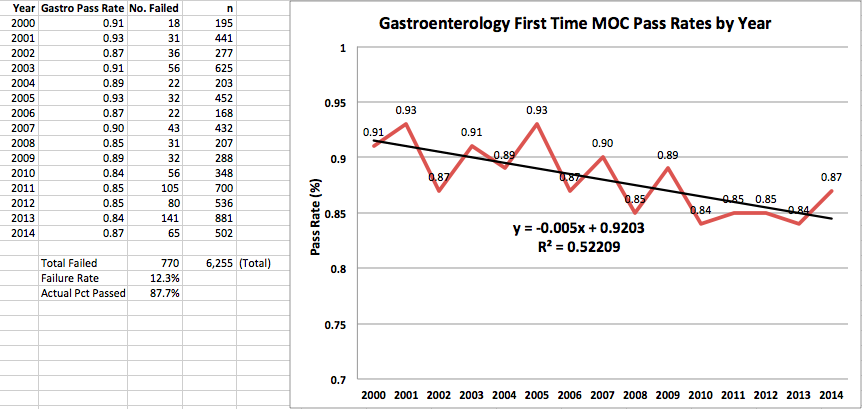It is one thing to have a financial scandal.
It's a whole new thing when you try to cover it up.
But it appears this is what we should expect from an organization that has exhaustively defined their version of the term "medical professionalism" using testing fees of practicing physicians worldwide.
Given the money involved, this was predictable.
Note the difference in the dates of creation of the ABIM Foundation on the two web pages - the first claiming the ABIM Foundation was started in 1999, the second stating the Foundation was started in 1989.
Let's examine what is said on the new web page more carefully.
First the new Foundation About Us web page says:
"How was the ABIM Foundation established?
ABIM created the ABIM Foundation in 1989. Through an extensive strategic planning process, in 1999, the ABIM Board of Directors established a separate Board of Trustees to govern the ABIM Foundation."
Note that the ABIM now admits the ABIM Foundation was indeed created in 1989 as this blog
uncovered in December 2014. This does not explain
why the ABIM Foundation was established and
why they hid its existence before 1999 on their website previously. In fact, the US Internal Revenue Service should be VERY interested in why the Foundation still lists its creation date as 1999 on its
most recent tax filing made this year.
It is interesting that the ABIM suggests there was "an extensive strategic planning process" to create a separate "Board of Trustees to govern the ABIM Foundation." This still does not explain the ABIM Foundation origination date discrepancy nor does it relieve the organization of its responsibility to disclose to the public the existence of the Foundation before 1999. In 1998 the ABIM did change its bylaws, however. At that time, the new ABIM bylaws made the ABIM Foundation the "
sole voting member of the Board as a corporate entity" effective 1 January 2002.
Continuing:
How is the ABIM Foundation funded?
ABIM initially transferred $5 million to the Foundation in 1990. Over nearly 20 years (between 1990 and 2008), approximately $56 million was transferred by ABIM to the ABIM Foundation. There have been no transfers since 2008.
According to the above statement, the ABIM Foundation claimed they received "approximately" $56 million of physician testing fees to their Foundation for their own use. We should note that the ABIM Foundation already had
$59,618,428 million in assets by 30 Jun 1999. It appears the Foundation is using a very loose definition of "approximate" because the amount transferred was much more. In fact, an additional $20,660,000 were transferred to the Foundation from 2000-2007 for a grand total amount of accumulated assets courtesy of US physicians of $80,278,428. (Links to the itemized transfer amounts are included here for your review:
In 2000: $3,300,000;
in 2001: $1,600,000;
in 2002: $1,000,000;
in 2003: $1,760,000;
in 2006: $7,000,000, and
in 2007: $6,000,000.)
And what does the ABIM Foundation do with all that money?
What kind of work does the ABIM Foundation do?
The ABIM Foundation is an operating charity, and as such develops and implements projects in support of its mission.
One of the Foundation’s most significant contributions has been the publication of Medical Professionalism in the New Millennium: A Physician Charter. Co-authored with the ACP Foundation and European Federation of Internal Medicine, the Charter has been endorsed by more than 130 organizations and 100,000 copies have been distributed.
The "mission" here remains undefined. We should recall that the Medical Professionalism in the New Millenium paper wasn't published until 2002 and the team assembled to "define" the term "medical professionalism" didn't start work until 1999. This leaves a gaping hole in the "mission" of the ABIM Foundation from 1989-1999. In fact, it appears that the ABIM Foundation was little more than an investment vehicle for the ABIM and a way to shelter cash from the ABIM and a means to pay their friends other grants that are undisclosed on their new "About Us" web page. For instance, the ABIM Foundation paid money to the
George Soros' group, IMAP, and
paid back funds to the ABIM and to the American College of Physicians. In addition, the Foundation has made
grants to their own (now defunct) Institute of Clinical Evaluation among others. Is the ABIM Foundation ever going to mention these transfers of physician testing fees to these many institutions? It seems unlikely.
A thorough house cleaning and investigation of the ABIM and its Foundation is long overdue. The recent attempts at "transparency" by the ABIM Foundation are only making things worse. It is no longer tolerable that our professional organizations who have supplied content to the ABIM for their Maintenance of Certification program permit the ongoing cover-up of the ABIM's financial actions over the past twenty-five years. The longer these other organizations collude with the ABIM, the more they risk their own credibility with today's practicing physicians.
It's time to stop the madness and for the ABIM and their collaborators to come clean.
-Wes
